SCRAPBOOK – TT BIKES

Some surprisingly diverse machinery has entered competition on the Isle of Man’s legendary Mountain Course over the years. Mark Graham examines some of the more left-field examples
Dresda Honda GL1000 Goldwing
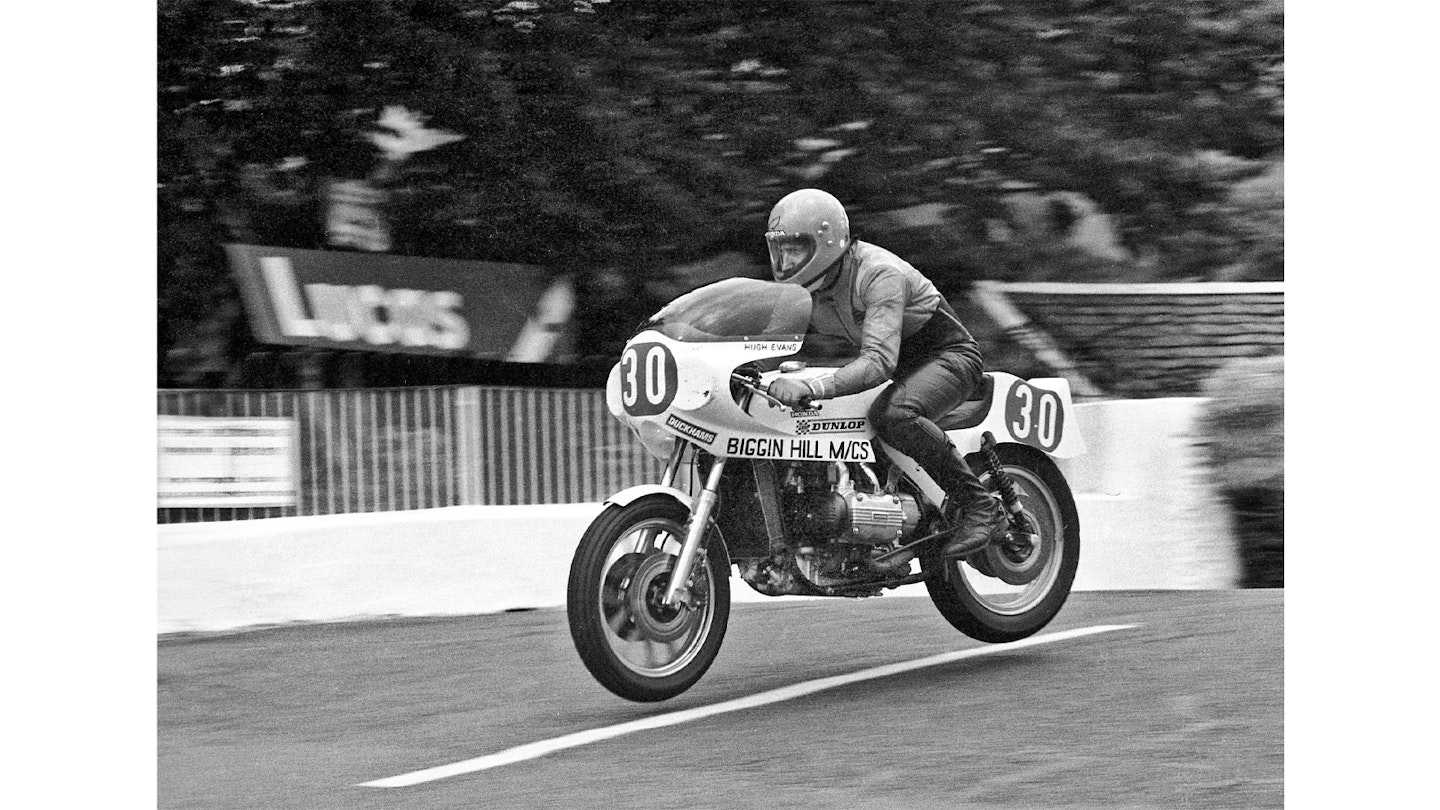
Just two years after its 1975 launch, the mighty Gold Wing was being repurposed into a Formula 1 TT contender. Well, not much of a contender – it endured an unrewarding practice experience and failed to make the grid for the race.
This was no ordinary Wing. Dave Degens, of Dresda repute, had wrapped some lightweight tubing around the big flat-four, and AP Lockheed calipers were employed to help scrub speed off the monster when required.
A Wing might seem a somewhat perverse choice for the Island, but back in ’77 it was still an actual motorcycle as opposed to the luxo-touring leviathan it has morphed into today. With 75bhp and 60lb ft to waft this lightweight version along, experienced TT rider Hugh Evans would surely have been in the midfield mix had the big Honda made the Glencrutchery Road startline. On another note, isn’t that period Dresda seat unit gorgeous?
Honda CBX750
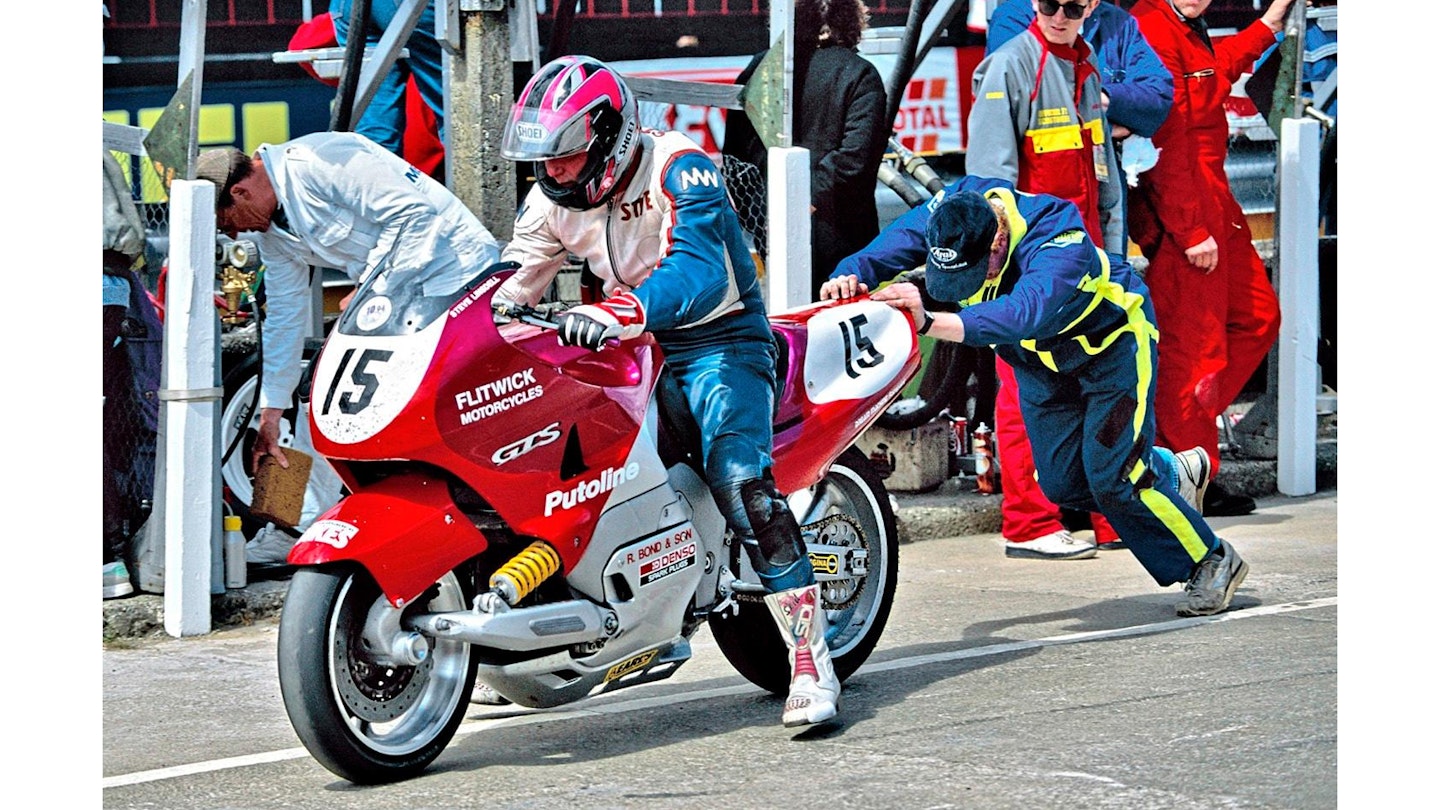
Honda’s CBX750 may have looked something like a sports motorcycle. The spec might even have hinted in that direction: Pro-Link rear suspension, around 90bhp at the rear wheel and fake bellmouths moulded to the airbox sides indicated Honda were at pains to make it appear as racy as possible.
It was anything but. Boasting hydraulic valve lifters (as opposed to shim or screw-and-locknut) it was clear this engine was purposed as a low-maintenance hack. Which it might have been, had not early camchain tensioner failures been a problem.
The CBX was used largely as a police bike in Greece and Ireland. Not even the cops deserved it, but the opposition in the 750 class at the Production TT in 1984 must have been even worse. The top eight at the finish were all on Hondas, with Trevor Nation taking the win at 102.24mph.
By the following year, sports bike design had moved on, and Mick Grant won the class on a Suzuki GSX-R750, with six of the top ten on Gixxers.
Yamaha GTS1000
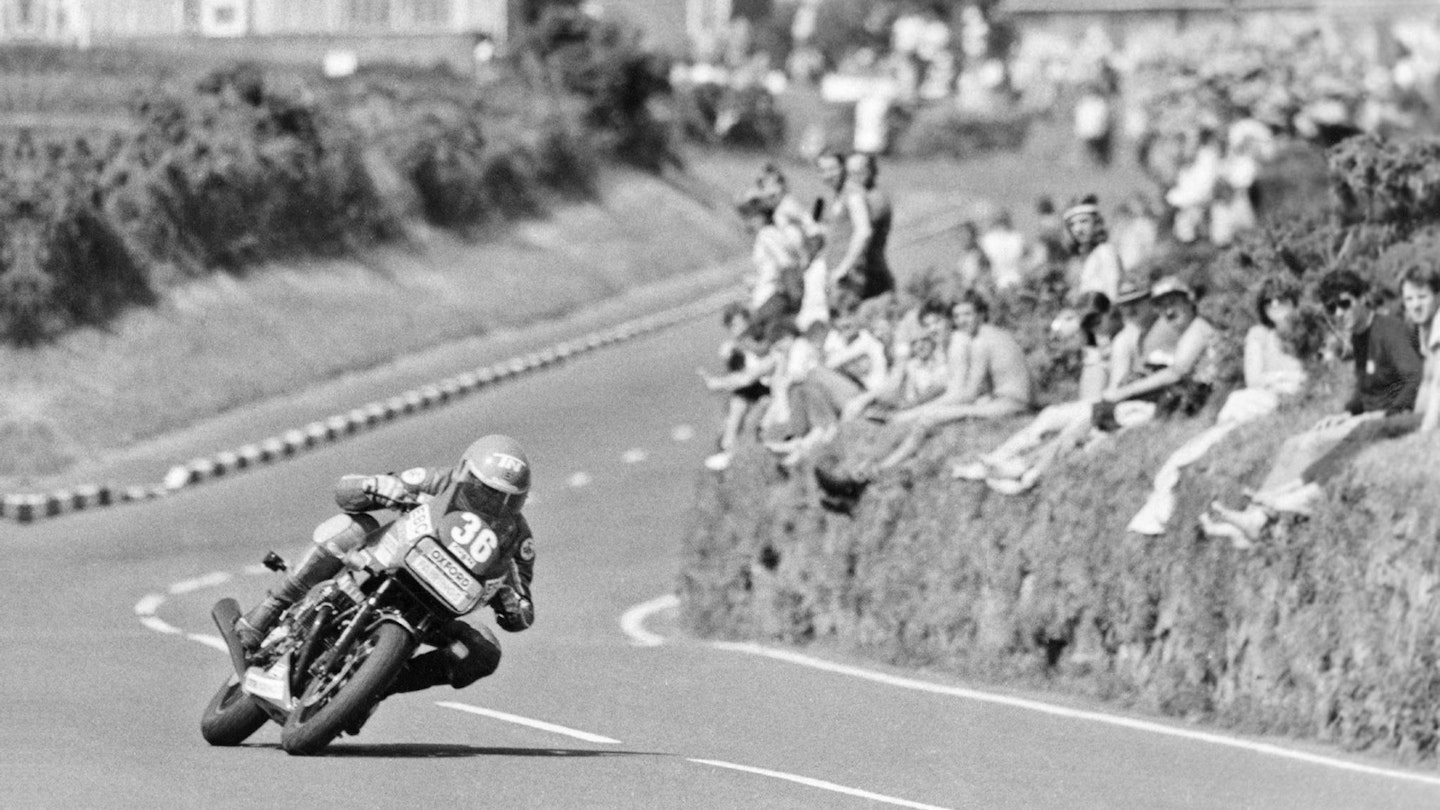
Flitwick Yamaha boss Steve Linsdell made his name hustling a Royal Enfield Bullet 500 around the Island in Manx Grands Prix – an original Bullet from the Redditch factory in Worcestershire. Plainly no stranger to making unlikely machinery circulate the Mountain Course (he posted a 102.52mph lap on the Bullet) it was not a surprise when he entered Yamaha’s portly but ingenious GTS in the 1994 TT.
The Yamaha’s pivoted-fork front suspension and steering was not the issue (it was not a true hub-centre set-up), because that worked well. The major drawback was the sheer mass of the bike. At a lardy 289kg (637lb) wet, it was a brute of a thing to change direction with – even Linsdell’s vast Isle of Man experience and firm hand on the ’bars could not tame it enough to trouble the leaderboard.
Benelli Sei
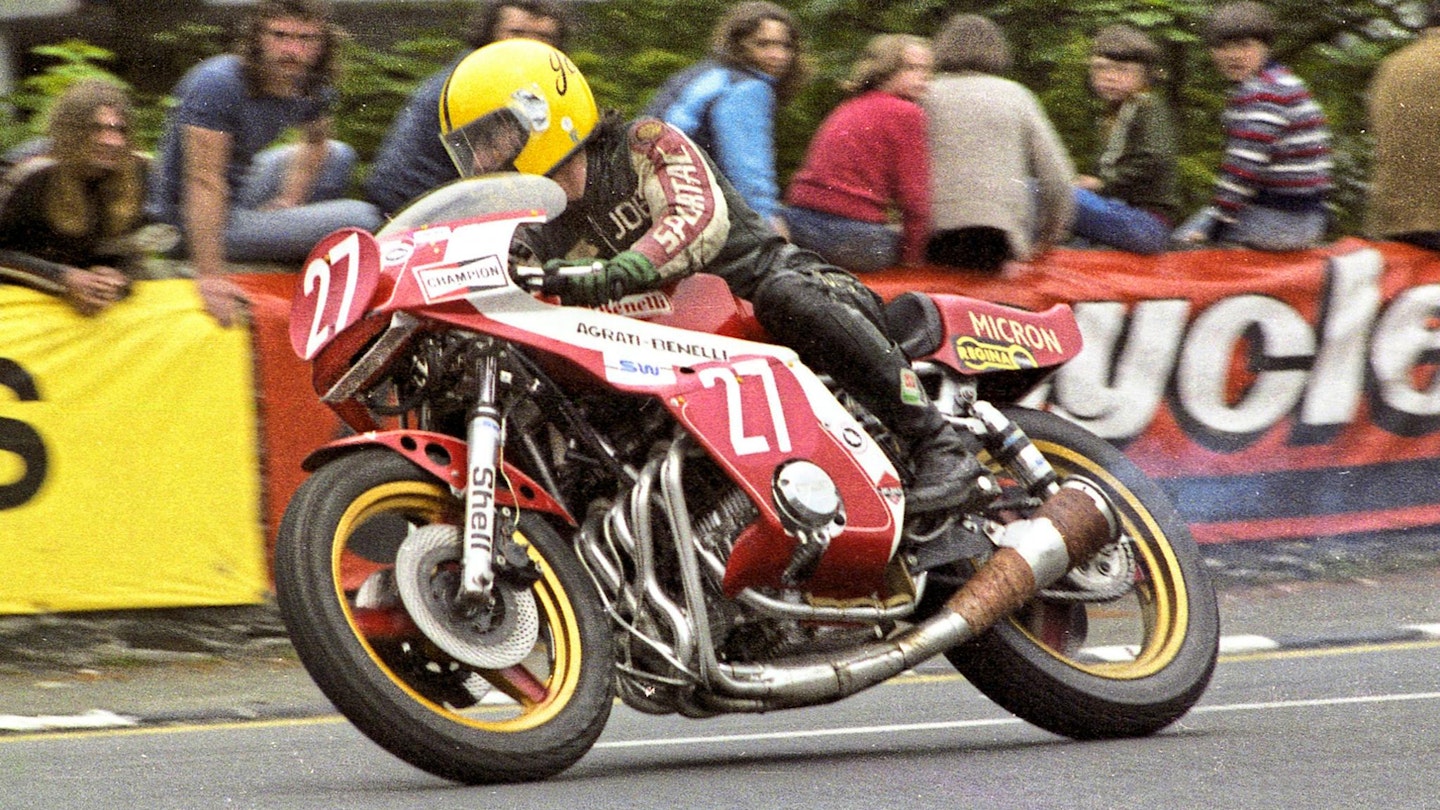
Not even the considerable early prowess of Joey Dunlop could help nurse this big six-pot Benelli 900 to the finish of the 1979 Formula 1 TT. You can see blue smoke fairly billowing out of the foghorn-like exhaust and the machine was retired after just one lap.
It was a serious attempt, backed by the importer Agrati Sales Ltd. The substantial front-mounted oil-cooler, Micron exhaust system and SW air shocks indicate considerable efforts were made to give the engine a fighting chance – as well as to sweeten the handling of the big, wide device on what was then a much bumpier, punishing course than it is now.
It’s hard to tell from the photograph if the production duplex final-drive chain was retained, although that matter is academic as the Sei was among 23 DNFs in the race, sharing that ignominy with BSA, Triumph, Laverda and Ducati machinery. Hondas filled the podium places, with Alex George winning from Charlie Williams and Ron Haslam in third.
Itom 50cc
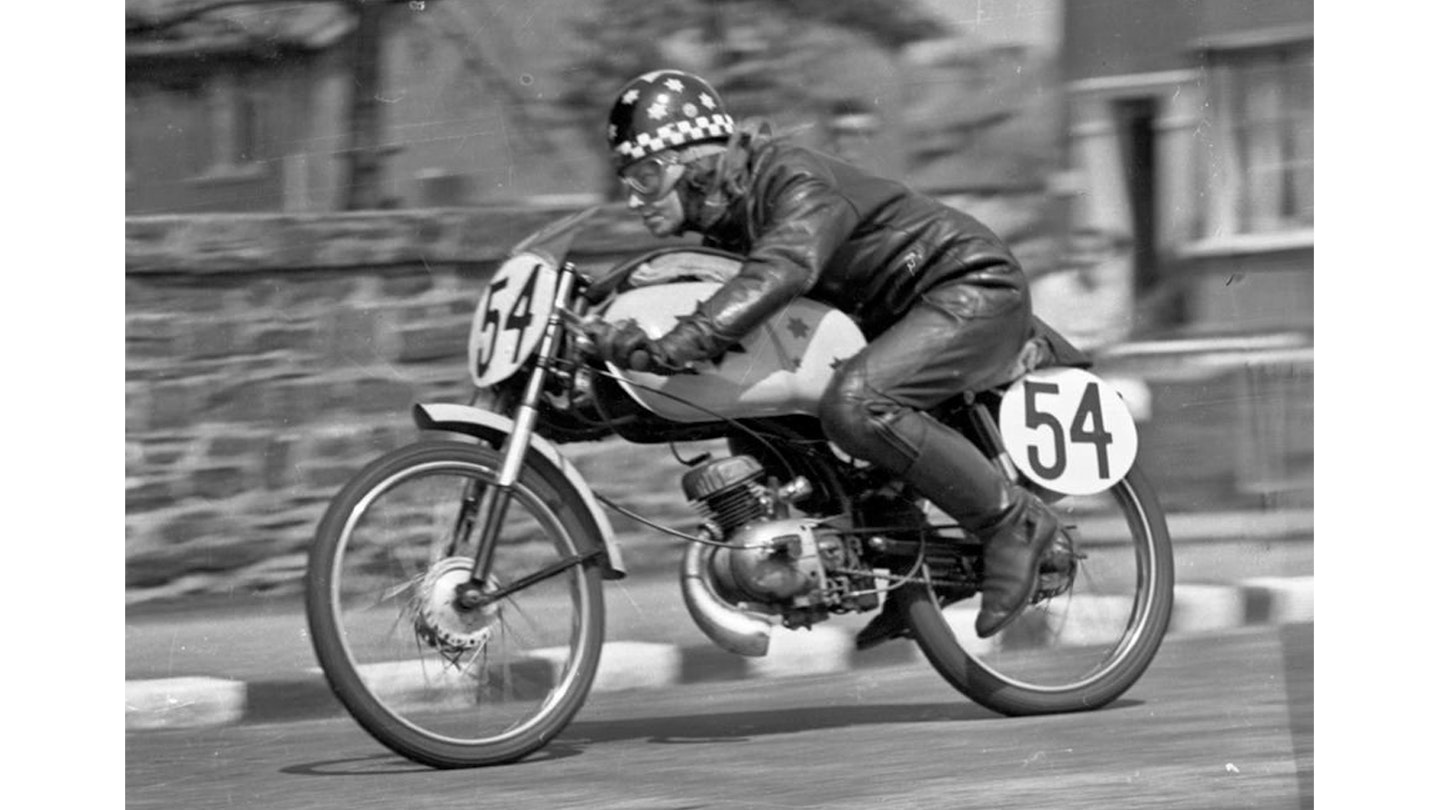
The Itom Competizione was the go-to 50 for privateers denied Suzuki, Honda or Kreidler products. In 1962 Beryl Swain, the first female to race at the TT, had to wear a diver’s weighted belt for the race after the FIM invoked a minimum rider weight in an attempt to prevent the eight-stone Swain from riding. ‘Too dangerous for women’ was the backward thinking. She finished 22nd at 48.33mph after losing top gear from her three speed ’box on the second of two laps. Ernst Degner won on a Suzuki at 75.12mph.
Britten V1000

An even more exotic machine than the factory Honda RVFs of the 1990s – and certainly put together on a tighter budget. The Kiwi meisterwerk wowed IoM crowds with its lurid power wheelies and visibly brutal drive out of the turns.
Regarded by some as a the ‘wrong’ bike for the TT, with its extensive use of carbon fibre and advanced technology, Shaun Harris finished the 1996 Senior in 33rd place, posting a race average of 107.26mph.The bike’s creator John Britten died in 1995.
BSA Bantam

There was some exotic Ultra Lightweight machinery on the Island in 1952. Cecil Sandford won on a double overhead-cam MV Agusta, with Carlo Ubbiali and Len Parry second and third on the equally exquisite Monoalbero single overhead-cam Mondials. Further down the field, although not that much further, was Harvey Williams who came home seventh on a BSA Bantam. Sandford notched a 75.54mph average time; Williams achieved a race average of 58.03mph. He was the first (and only) BSA to finish. Bantams – plentiful, cheap and with store rooms across the empire chockful of spares – were a tuner’s delight.
Robust and capable of huge power hikes, the giant-killers of the times adored the little machines.
Aussie tuner Eric Walsh regularly put together 100mph 125s, while Brit George Todd published essential reading in the form of Boost Your Bantam, cataloguing myriad ways to go about squeezing unlikely numbers from the piston-port single. Fred Launchbury took a Bantam dripping with Todd mods to 20th in the ’67 125cc Lightweight TT at an average speed of 73.9mph
Honda CX650 Turbo
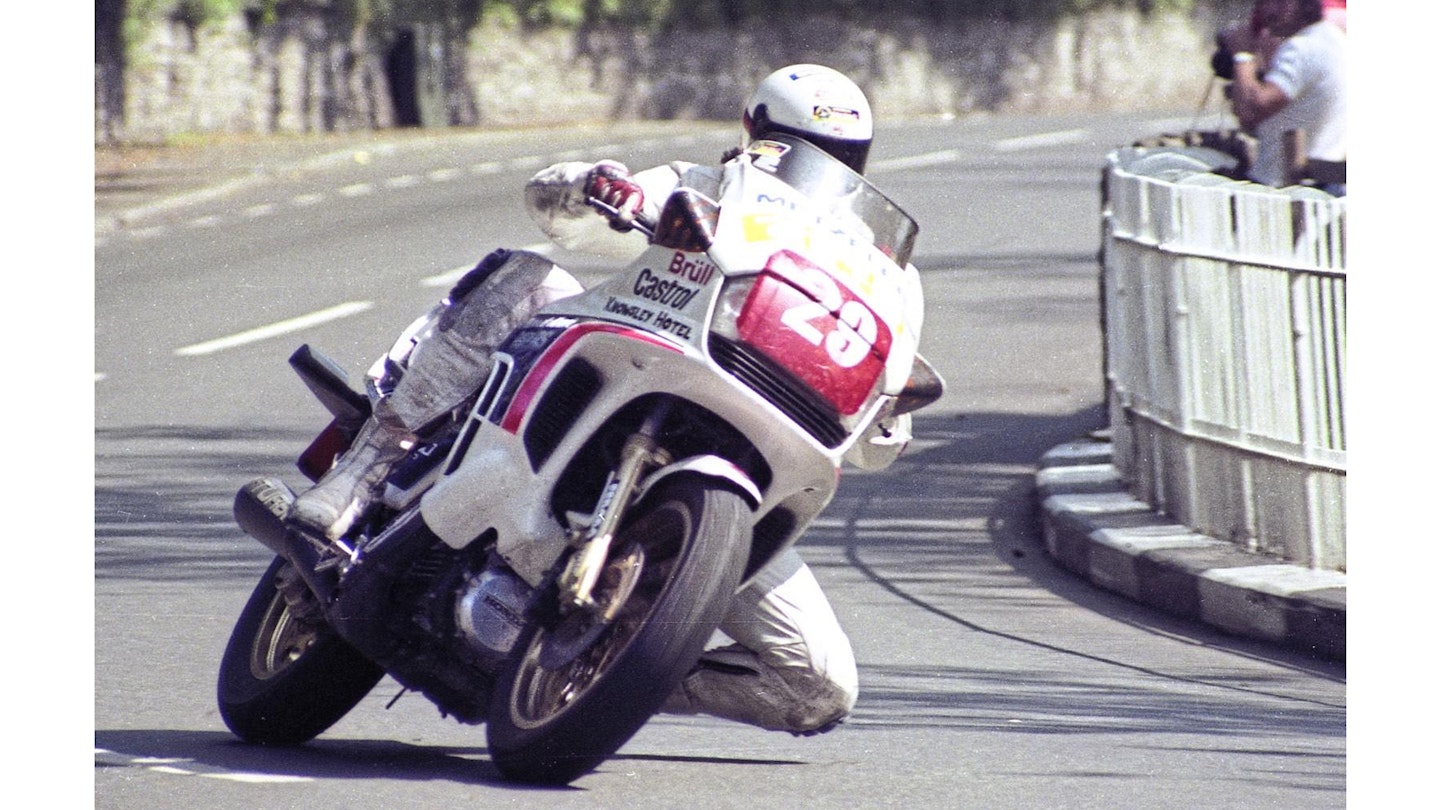
Hats off to Elmar Geulen for being the one and only TT finisher to ride a turbocharged motorcycle – and a CX650 Turbo to boot. The redoubtable German rider came home 16th in the 1984 Proddie TT, riding a novelty machine that had no reason to be lumped into the 751-1500cc class despite the ‘advantage’ of forced induction.
Still, the fact that the German rider posted a race average speed of 92.82mph compares very favourably with winner Geoff Johnson’s 105.28mph on a Kawasaki GPZ900R.
It’s hard to imagine riding a CX650 Turbo at the speeds required to not be a hazard to other riders anywhere – let alone on the Isle of Man. A ponderous 259kg (572lb) motorcycle with a mere 90bhp is going to be a mission to control anywhere when it gets to three-figure speeds.
Can you even begin to stop trembling at the thought of it hard on the gas between Ginger Hall and Parliament Square? Massive respects to old Elmar.
Matchless G9
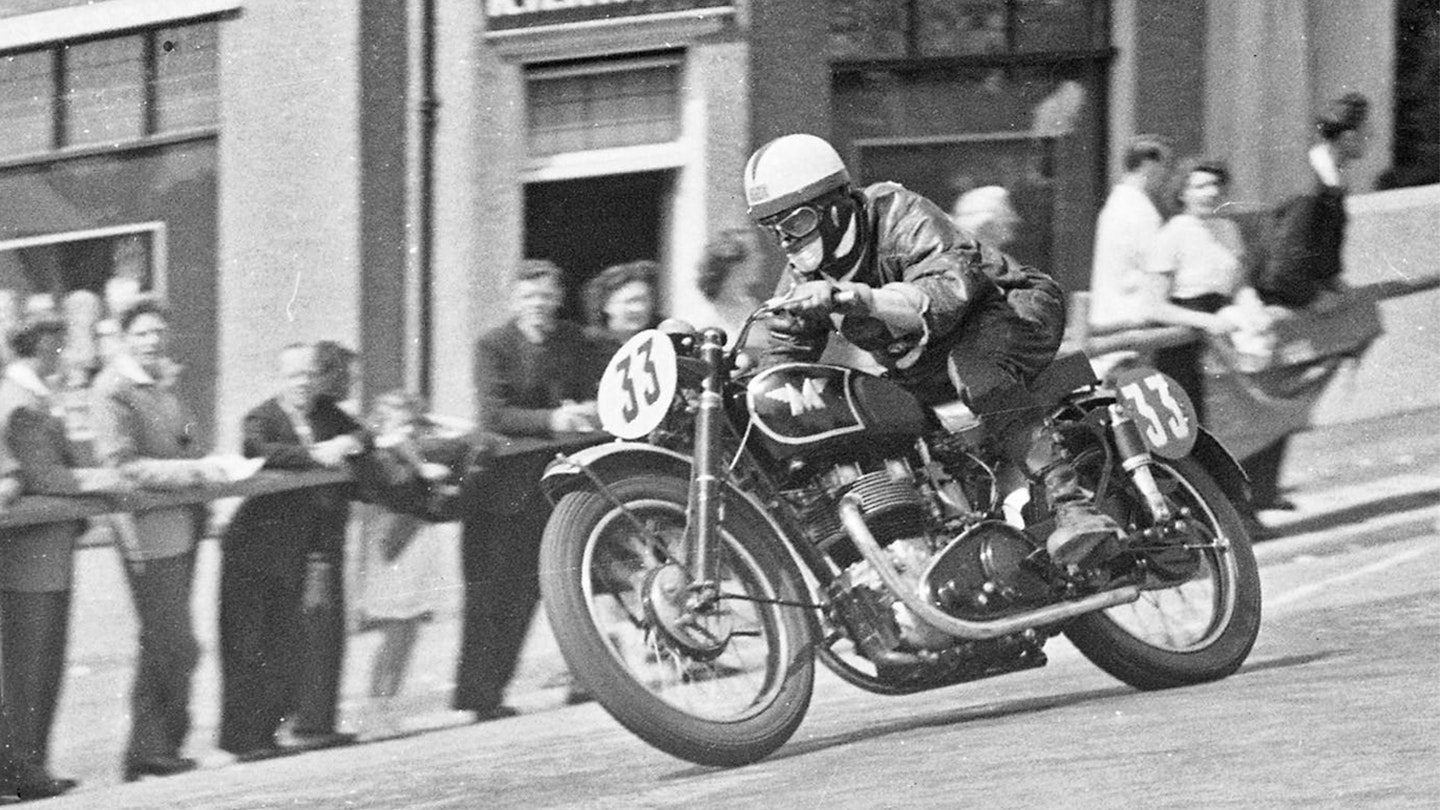
Flat out down Bray Hill in the 1951 Senior Clubman event is Johnny Cox, one of the leading lights of the Manchester Eagles Motor Club. Pleasant enough as a light tourer, a G9 would hardly be at the top of anyone’s wish list for a TT, even in 1951, but Cox was not deterred.
Plainly made of stern stuff, he would have endured numbing vibration from the iron three-bearing crankshaft engine, and all the time knowing that the fragile mehanite iron piece could spectacularly disintegrate at any moment. It comes as small surprise that Johnny failed to reach the flag in this race.
Triumphs filled the first three places of the race, although it should be noted that four Matchless machines completed the course. This was before the Clubman’s race became a BSA Gold Star benefit.
Morini 3½ Sport
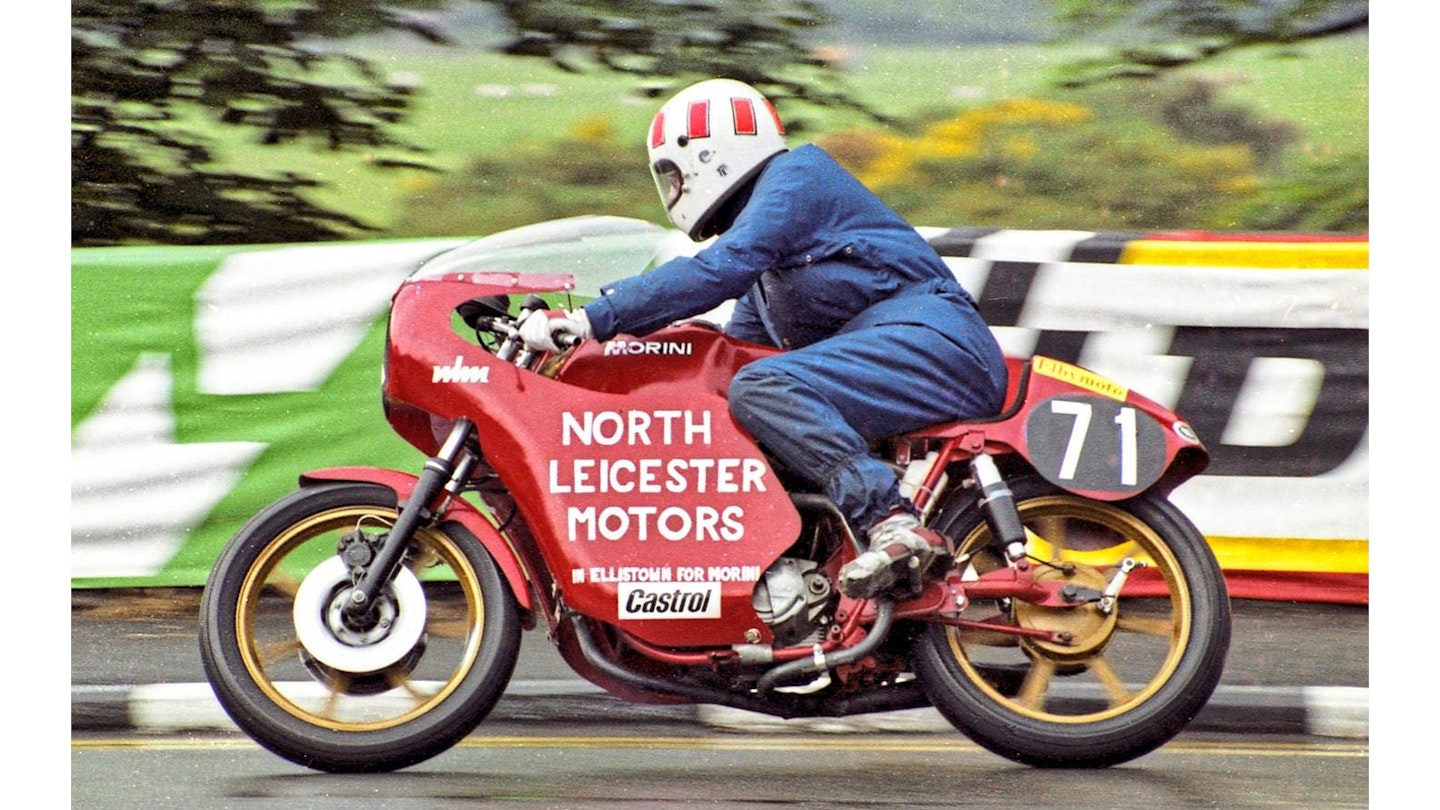
How we yearn for the days when a motorcycle shop could build a left-field race bike and enter a TT. So it was in 1980 when Trevor Wise borrowed his wife Christine’s Moto Morini to take to North Leicester Motors in Ellistown, south of Coalville, to turn into an F3 machine (250cc two-strokes/400cc four-strokes).
Formula 3 lasted from 1977 to 1981, with Ron Haslam winning a World Championship in 1980 on a hot Honda 400/4.
Trevor finished 18th in the 1980 IoM round at 79.36mph. Barry Smith won on a Yamaha 250 at 91.98mph, while 11 Aermacchis finished.
Another Moto Morini shop, Elby Moto, entered Trevor in 1981 on a trick 400cc Morini which was faster (128mph at The Highlander has been mooted) before destroying a rear piston on lap one.
BMW K100RS
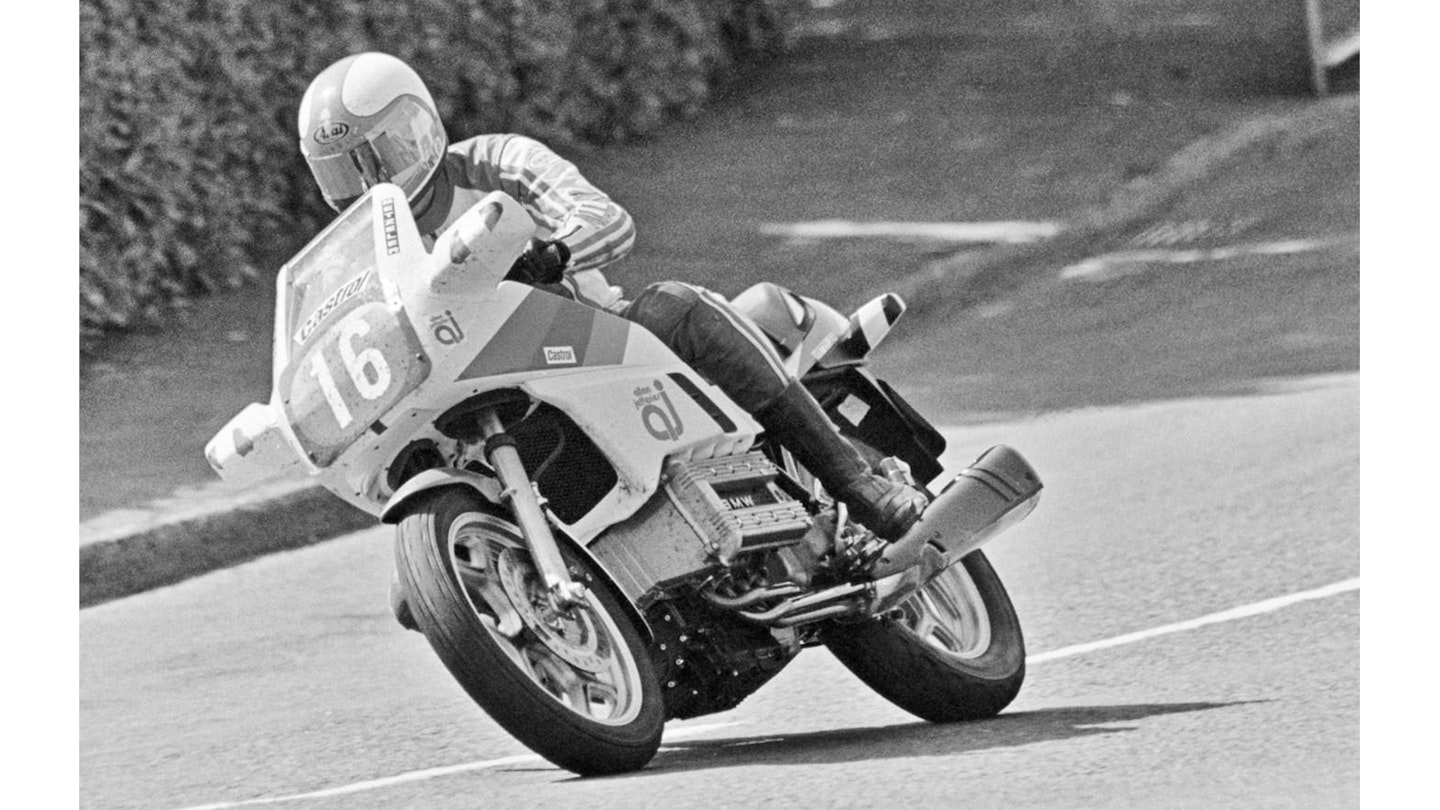
Another rider taking a highly improbable mount to a very decent placing is Nick Jefferies – eighth in the 1984 Proddie TT and seventh in the 1985 race. “It was a lot better than people thought,” he says. “It was a bit heavy and a bit slow, but only 18mph slower than the winning GPZ900R. It would only ever do 137mph – it just would not go any quicker than that.
“But it pissed off a lot of riders getting beaten by it – and BMW were delighted with what it did. They got a lot of good publicity from it – full page adverts, the lot. It was an easy ride compared to the Honda CBR1000F I rode. That bike was evil. I managed top six with it. Honda were so impressed, they took me out to dinner with the top brass, gave me the bike, the works.
“In all the 42 years I rode there, that was the worst by far.”
WERE YOU THERE?
Do you see any of these unlikely TT race bikes battling away on the Island? Let us know: letters@classicbike.co.uk
